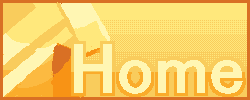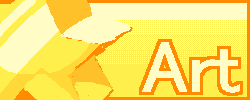Webriprob.com/Blog/2
- Making weird camera lenses -
8/12/25
In 2022 I inherited a Nikon D810 digital camera from my grandfather. Before this point I had a passing interest in photography and taking photos that "looked good", but it wasn't really an interest of mine to get a real camera. When I first got my hands on that camera though, it changed everything. The difference between the resolution of a phone sensor to one in a full-frame camera is truly an astonishing sight. Every photo I took could seemingly be zoomed into endlessly, capturing a moment in time in a much more in-depth way. Every single figure in the background of a photo could be seen clear as day, and every single brick on a building in the background could be counted. I could be alone in my fascination for these minuscule mundane details, but it's just astonishing to me exactly how much stuff you can archive with a single exposure on a digital camera.
Demonstration of the insane amount of detail in a full frame camera:

There are a lot of other benefits of having a large camera sensor, but that was definitely the biggest one to me. I ended up using my camera almost like a telescope or pair of binoculars pretty often in order to get a clearer view of something far away. As such, the idea of getting a telephoto lens for my camera was very appealing, but I'm broke, and I was back then too, so getting a telephoto lens was pretty much out of the question. At the time I assumed that there was pretty much nothing I could do. Lenses are super expensive, so they're probably pretty complicated, right? It's not like I could make my own.
which is what I thought until I took a glassblowing class at my university later that year. Our first assignment was to make these little snowmen out of glass and polish them up on the glass grinders. They looked a lot like lenses, so I took one of my reject snowmen and ground one side to be perfectly flat, and the other side to be a little bit round to make it look like what I'd expect a lens to look like. you have to do this under a lot of water or else it'll create glass dust that will give you silicosis and kill you.


after this, all that was left was to put it on my camera! but first I needed to know the focal length. A lens focuses parallel light to a certain distance, and that's what's known as it's focal length. you can move the lens farther than this distance from the sensor to focus on close objects, but if you move the lens closer than it's focal distance to the sensor it will be unable to focus on anything.
this is the concept that got me into learning about optics. In theory, a lens is very simple like this, but as I would soon find out, there are a lot of reasons why real lenses are more complicated.
The following screenshots are made using https://phydemo.app/ray-optics/
When a constant beam of light hits a surface it refracts in all directions. Using a lens, you can converge these beams onto a single point. In this simulation, it doesn't focus them to a perfect single point. I'm not sure of how realistic this is, but from experience with single element lenses, it definitely feels realistic.

When an object is far away, the rays coming from a given point will be effectively parallel. however the angle of these parallel rays will be different to those from another point, so different points in real life will focus to different points on the sensor. notice how the light focuses closer than in the first image. In this picture, the distance from the lens to the sensor is it's focal distance.

That's the basic idea at least. There's a lot more to this idea, and with such a simple explanation, there are bound to be unanswered questions, so if you're curious I highly recommend checking out some videos on it and messing around in a simulation like the one I used above.
Anyways, what I did was take the "index of refraction" of the type of glass I was working with (lime soda glass (i meant soda lime glass oops)) and just traced the rough shape of the lens on the simulator i linked above.

and so I got a measurement of about ~70mm from the back of the glass. that didn't really end up mattering much, because I think it was wrong and i just figured it out via trial and error. The issue then was that the focal distance was so short that the lens had to be pushed a little into the camera body in order to focus on the sensor. This caused an issue because the D810 has a diagonal mirror between the lens mount and the sensor, and it ended up blocking the lens. thankfully the focal distance was so close that it ended up working a little bit, although it's possible it could've been more precise.
in the following image you can see the lens creating an image of my desk lamp on the table. real lenses do the same thing, except that in a camera the lens shines the image on a sensor or film.
I think it looks really cool. If I had a lens that looked like this that was professionally made, I'd use it all the time. It looks like the end of some sort of antique rifle. The duct tape cylinder around the lens in the second photo is a lens hood which is used to block out stray light. I also had to put quite a small aperture made of cardboard in between the lens and the sensor, so in some ways this may just be a glorified pinhole camera, but as you can see in the image above, the lens did successfully create an image on my desk, so it does have at least some properties of a real lens
and as for the photos?

not the best lens ever. this is for a couple reasons, mostly due to the fact that real life optics are much more complicated than idealized optics with a lot more compounding factors. It also wasn't the best design for a lens, but I think it was worth it for the cool looking shape I ended up with. I think someone should make a real lens with a front element that looks like this. maybe faceted like a diamond? that way it looks all fancy and might give the images it takes a cool look.
After this I had the lens making bug for a while and I discovered this post:
https://www.davidkennardphotography.com/blog/1018-the-single-element-lens-radioactive-horses.xhtml
In short, most lenses have had at least 3 pieces of glass in them for reasons that will be demonstrated later, but you only need one lens to make an image on a sensor. They sell these things called "macro filters" in camera stores that are basically just big, perfectly round magnifying glasses that allow you to focus your camera lens on close objects. These have a focal distance, and if you put them that distance away from your camera sensor, they will create an image. Simple!!!
The macro filter I bought was an achromatic filter. these type of lenses are just a simple lens, plus another piece of glass with different refractive properties behind it to focus different colors of light back to the same point. This is because different colors of light are refracted at different angles through glass. Hopefully, this would make my lens at least a little more usable.
The process of making the lens should have been simple, but I made it more complex than it needed to be. The macro filter was so powerful that it needed to be placed approximately 600mm away from the sensor, which is about 2 feet. This is another reason why real lenses are better... somehow they manage to make a lens with a focal distance of ~2ft only 10 inches long. It's magic.
My original design was a PVC pipe attached to my camera's body. On the other end, I had the macro filter mounted on a cardboard tube, which I could move back and forth along the PVC pipe to focus the lens. I put this on my camera and it failed miserably. Absolutely nothing showed up in any photos. I realized it was probably because the tube was white, and so if any extra light got in, it would bounce all over and eventually get on the sensor, ruining the picture. I tried to coat the inside of the PVC pipe with black duct tape, but I couldn't really get it all the way through the pipe. Also, when i had the lens on the camera, the heavy PVC pipe was putting a LOT of strain on my camera's poor mount, so due to these factors I restarted with printer paper.
I coated the inside with black duck tape from the start and made a long 2ft tube to mount the macro filter to. I put it on my camera and...



WOW!!! It actually works. It looks awful, and nothing like the original blog post I was inspired by, but wow, it looks a lot better than I was expecting, and it looks a lot better than some of the results I was getting beforehand.
Today, most lenses are made with several glass elements, and it began with a design from 1893 called the Cooke triplet. Paraphrasing from Wikipedia, when you use a single (technically 2 in my design) piece of glass, it leads to a lot of problematic imperfections in refraction that ruin your photo (as seen above lol). So this guy, Dennis Taylor invented this trio of lenses that fix these big optical imperfections. I don't know how, because solving actual problems in optics seems crazy difficult.
But the thing is... you can order these single 1pc glass lenses online... and for dirt cheap... so I thought... maybe I could make my own Cooke Triplet?...
But I never did. It's probably a good thing, because I legitimately have no clue how I'd figure out the right lenses to get for it. But if you're really dedicated, and good at math, and really don't want to spend more than $30 on a camera lens... then go for it!!! It's astonishing that you can buy professionally made glass lenses so cheap, and I kind of want to spend some time experimenting with them.
I left DIY behind me at this point. My obsession with getting a cool super-telephoto lens for as little money as possible led me to discover a magical little lens mount called the Tamron T-mount, which is this universal mount from the 60's that could be adapted to ANY brand of film camera. Today you can buy T-mount lenses for dirt cheap online, and we're talking $40 for a 600mm lens (You can't usually even get a USED 600mm lens for under $1k). And they'll work on your camera, because they were designed to work on any camera. The trade off is obviously that these lenses were built in the cheapest, easiest way, which makes them EXTREMELY bulky, and makes the photos they take not especially good. For example, A cheap Tokina T-mount 600mm lens just uses the exact same principle that I used to build my own telephoto lens where they literally just do the simplest possible thing and put the lens element exactly 600mm away from the sensor. This obviously makes the lens super unwieldy, so they're not popular among professional photographers.
I couldn't imagine the photos they take would be any WORSE than the photos I took on my DIY lens, so I still kind of want one... just to satisfy my need to take super-telephoto shots. There are also these things called "mirror telephoto" lenses that were also popular with T-mount users, and those are REALLY fascinating. I highly recommend looking them up. They're essentially camera lenses with NO GLASS in them... how is that possible?... you will have to find out for yourself.
As a closer, here's a fun thing that i found out you can do with phone cameras:
Take a fallen leaf off the ground, prick a tiny hole in the leaf with a pin or the tip of a fine point pen, and then put that hole in front of your phone's camera. This acts like a pinhole lens that lets a lot of orange and red light bleed through, so you're left with this fun vintage-y looking photo. You also get really strong and funky-looking lens flares. Is it dumb? Yeah, but it's kinda fun...
...at least I thought it was, ok? XP













 Bsky:
Bsky:  Botb:
Botb:  Artfight:
Artfight:  Bandcamp collection:
Bandcamp collection:  Discord: webriprob
Discord: webriprob
